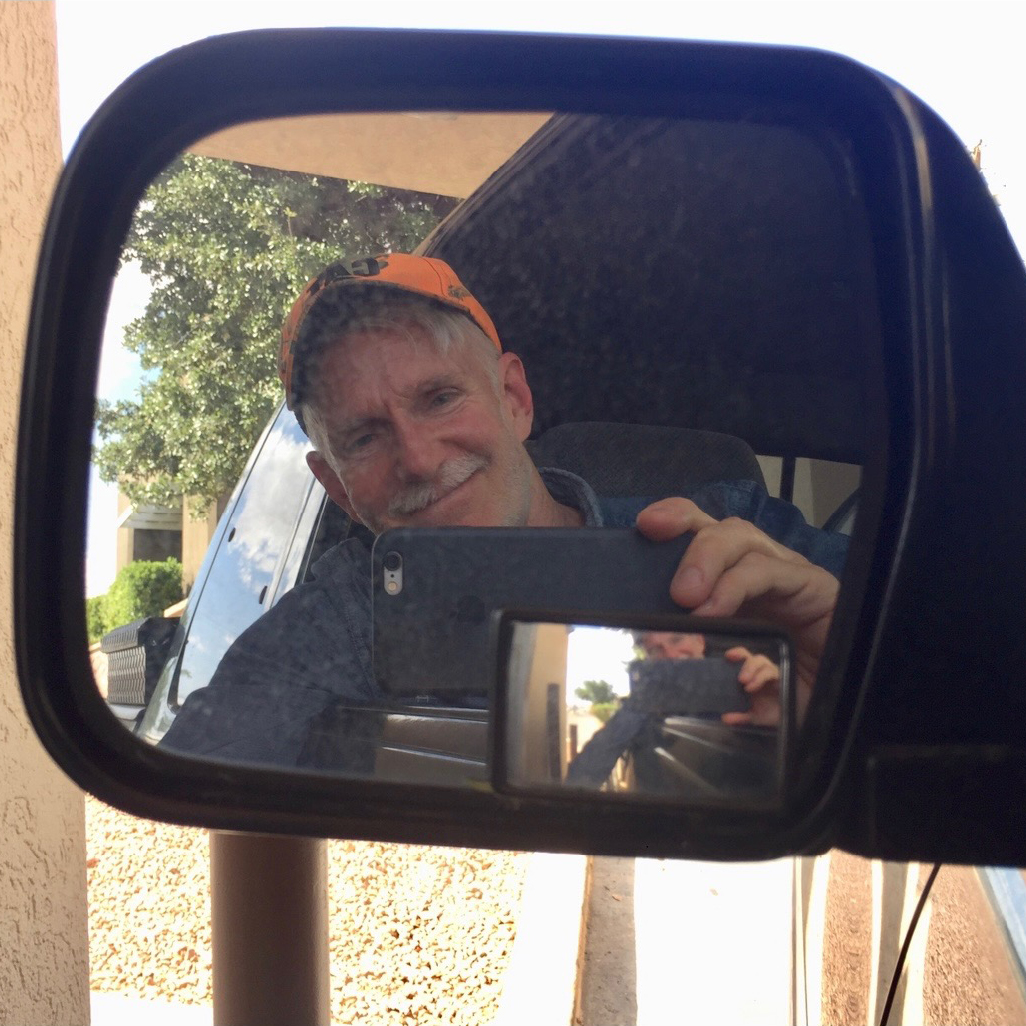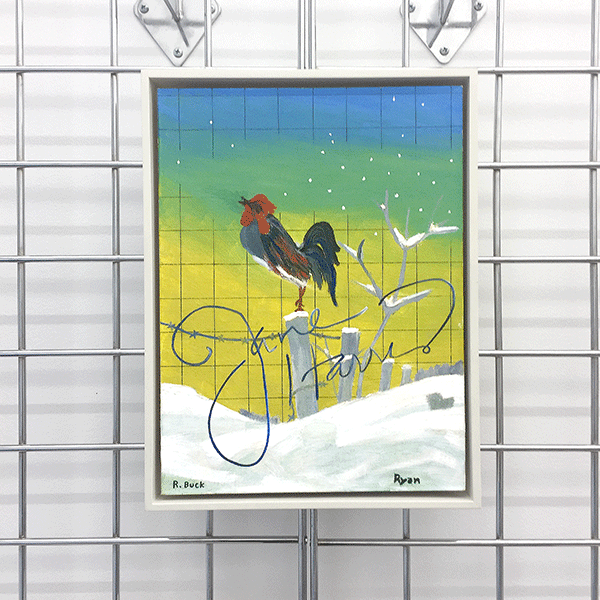




January 8, 2023
Robert Buck
Cross-disciplinary artist Robert Buck’s Thirteen Shooters series from 2001 was a meditation on media coverage of young school shooters when they first began to appear in the 1990s. His video work, too, explores the relationships between image-making, violence, desire, and indentity formation. Much of Buck’s conceptual framework is based in psychoanalysis (Buck is the Art Editor of The Lacanian Review), particularly the ideas surrounding the concept of the Name of the Father which is a metonym for the patriarchy, the law, and hierarchically organized society. But as traditional institutions are eroded by changing technology, social mores, and ideals, how do we go about forming an understanding of the world and our place in it? One way is to make a pilgrimage to the desert!
For Buck songs have always had very strong associations with place, and he wanted to take us on a road trip through the American West, traversing the land from Zion National Park in Utah, to his own small plot near the US-Mexico border in Texas. We discuss Bob Dylan and Pattie Smith, the complicated legacy of settler-colonialism in our conception of the American West, and white wine margaritas. It’s a journey that starts in a stifling suburb of Baltimore in the late 70s and ends with a remarkable epiphany in a white-out blizzard just beyond Truth or Consequences New Mexico.
Complete playlist below; tracks in yellow were cut for time.
- Little Room, The White Stripes, 2001
- Strange, Galaxie 500, 1989
- One More Cup of Coffee, Bob Dylan, 1976
- Hurt, Johnny Cash, 2002
- Afraid of Everyone, The National, 2010
- The Rip Tide, Beirut, 2011
- Sun, Caribou, 2010
- Ghost Dance, Patti Smith, 1978
- Video Games, Lana Del Rey, 2012
- Holy Roller Novacaine, 2003
- Counting Stars, OneRepublic, 2014
- Neon Pattern Drum, Jon Hopkins, 2018
- 2000 Miles, Pretenders, 1984
- Song for Zula, Phosphorescent, 2013
- St Jude, Florence + The Machine, 2015
- The Beautiful Dream, George Ezra
- Shallow, Lady Gaga & Bradley Cooper, 2018
- Both Sides Now, Joni Mitchell, 2000
Morning
To find the Western path
Right thro' the Gates of Wrath
I urge my way;
Sweet Mercy leads me on:
With soft repentant moan 5
I see the break of day.
The war of swords & spears
Melted by dewy tears
Exhales on high;
The Sun is freed from fears 10
And with soft grateful tears
Ascends the sky.
-William Blake
Robert Beck was born in Baltimore and moved to New York City in 1978 to learn filmmaking and cinema studies at New York University. In 1993, he attended the Independent Study Program of the Whitney Museum of American Art. He is a cross-disciplinary artist recognized for his precise use of materials, ranging from traditional art supplies to such non-art materials as mortician’s wax, industrial reflective paint, latent fingerprint powder and gunpowder. Trained as a filmmaker, he works in a montage-like metonymical manner, a ‘horizontal’ approach that allows him to utilize the associative power of adjacent images and artworks. The crux of his art is subjectivity, with violence, sexuation, loss, and America as recurring themes. In 1995, Beck was awarded a New York Foundation for the Arts Fellowship, in Printmaking/Drawing/Artists’ Books, as well as an Art Matters, Inc. grant. He received a Louis Comfort Tiffany Foundation Award in 1999. In 2007, Beck had a solo exhibition at the Wexner Center for the Arts in Columbus, OH. In 2008, Beck changed his given, or father’s, name as a work of art by a single vowel to Buck. His practice is oriented by a constellation of influences, including artists Marcel Duchamp, Cy Twombly, Agnes Martin, and Cady Noland, filmmakers Robert Bresson and David Lynch, novelist Cormac McCarthy, forensic science, Buddhism, the teachings of French psychoanalyst Jacques Lacan, and the American southwest. In 2009, Buck bought a small off-grid property along the U.S.-Mexico border south of Marfa, Texas, which he refers to as his extimate studio. Since 2018, he has been an art editor of The Lacanian Review. His work is included in museum and private collections internationally. His moving image works are distributed by Electronic Arts Intermix, New York. He is represented in New York by Ulterior Gallery and Von Ammon Co. in Washington, DC., where he had an exhibition in November, Robert Buck: Wound Filler. In 2019, Buck received a Pollock-Krasner Foundation Award. Buck lives and works in New York City and far West Texas.
www.robertbuck.net
www.instagram.com/robertbuckstudio
